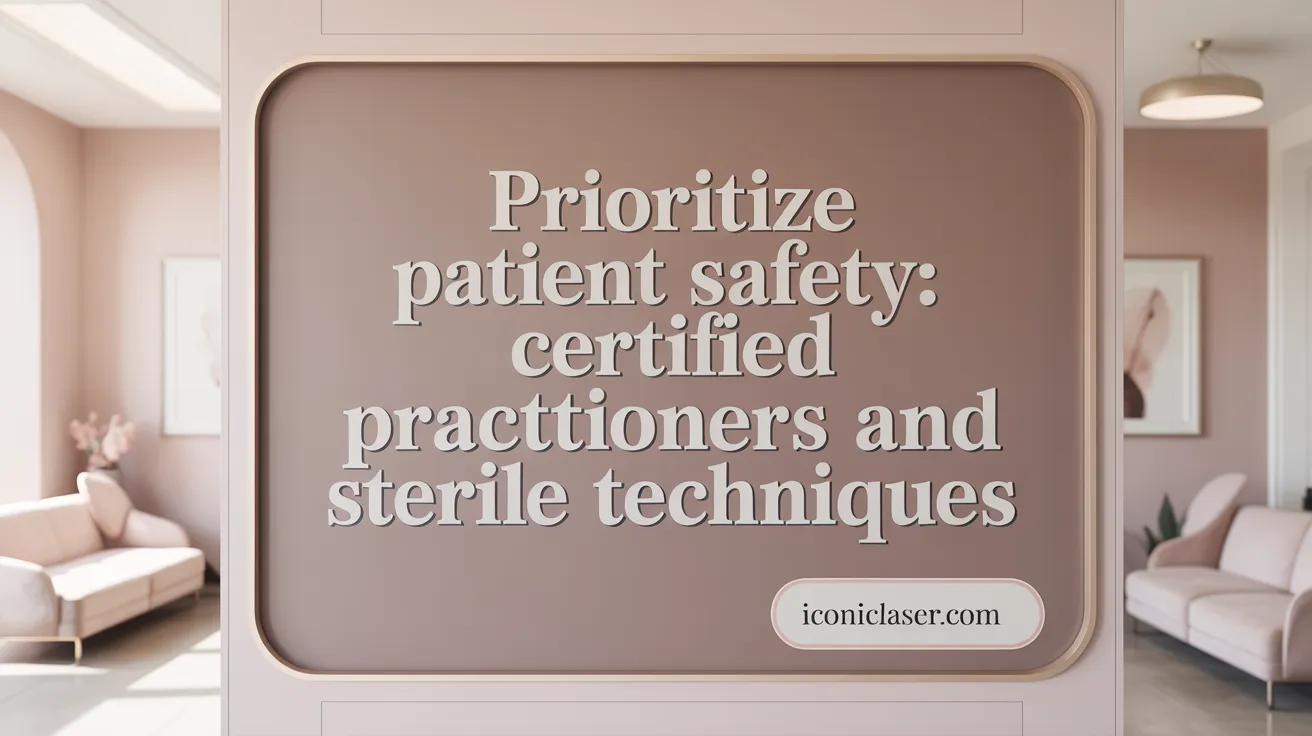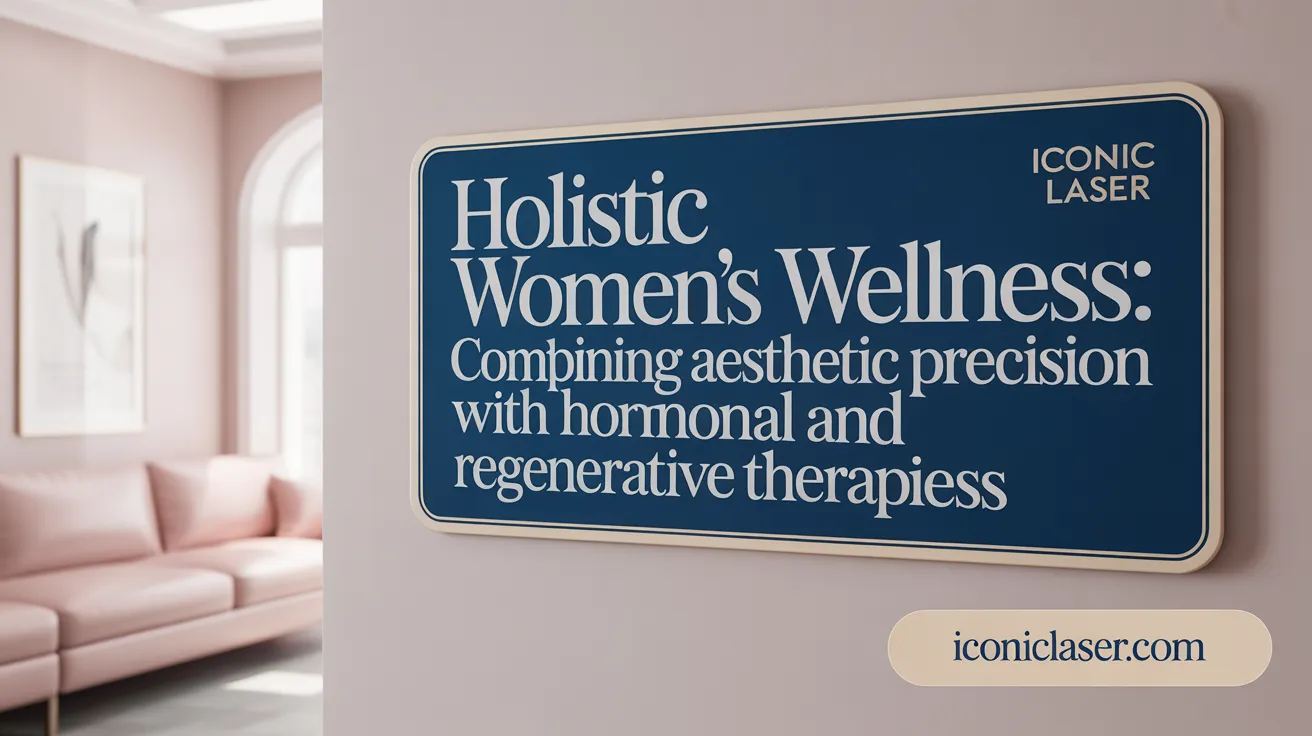Understanding the Significance of Patient Safety in Advanced Aesthetic Procedures
Importance of Patient Safety in Dermatological and Cosmetic Procedures
Patient safety is paramount in dermatological and aesthetic treatments to minimize risks and ensure favorable outcomes. Proper documentation, informed consent, and thorough patient assessments underpin safe practices that protect patients and support legal accountability.
Medical Nature of Injectables and Laser Treatments
Injectable therapies and laser skin resurfacing are medical procedures requiring precision and care. Injectables must utilize FDA-approved products and are associated with common minor side effects like swelling and bruising. Laser treatments improve skin texture and pigmentation but carry risks such as burns or pigment changes if not carefully managed.
Necessity of Qualified Specialists and Sterile Environments
To safeguard patient health, these treatments should be administered exclusively by trained, certified specialists certified by recognized medical boards. Procedures must occur in sterile medical settings under physician supervision to prevent infection and ensure protocols are strictly followed. Medical spas offering these services must adhere to stringent hygiene, credential verification, and ongoing staff training to maintain a standard of care that prioritizes patient safety.
Clinic Expertise in Advanced Dermatological and Non-Surgical Cosmetic Treatments
What advanced dermatological and cosmetic treatments does the clinic specialize in?
Our clinic in Troy, Michigan offers a comprehensive range of advanced dermatological and cosmetic treatments tailored to meet each patient's unique needs.
Range of advanced treatments offered
We specialize in skin rejuvenation techniques such as laser resurfacing, chemical peels, and microneedling. These procedures improve skin texture, tone, and stimulate collagen production for healthier, youthful skin.
Skin rejuvenation techniques used
Laser resurfacing employs CO2 and erbium lasers to reduce wrinkles, pigmentation irregularities, and scars. Chemical peels promote exfoliation and new skin growth, while microneedling enhances skin elasticity and smoothness.
Non-surgical facial enhancement options
Facial enhancement services include Botox injections and dermal fillers, which soften wrinkles and restore volume with minimal downtime. Thread lifts offer a non-invasive lift to sagging skin, delivering natural-looking results.
Body contouring technologies
Our body contouring treatments use innovative non-invasive technologies such as CoolSculpting® and radiofrequency therapy. These methods target fat reduction and skin tightening safely and effectively without surgery.
Women's wellness integration
Beyond aesthetics, we provide specialized treatments that support hormonal balance and reproductive health, integrating women's wellness into our care approach.
This multidisciplinary expertise ensures personalized, safe, and effective treatments, enhancing patients' appearance and overall well-being. For more on safety and qualified providers, see our Injectable Safety Guide.
Comprehensive Safety Protocols for Injectable Procedures

What qualifications and certifications should clinicians have for injectable treatments?
Injectable procedures must be performed by trained, qualified specialists certified by recognized boards such as the American Board of Plastic Surgery, Dermatology, or Otolaryngology. Membership in reputable societies like The Aesthetic Society further ensures adherence to professional standards. Choosing providers with these credentials guarantees expert knowledge of anatomy, sterile techniques, and patient safety.
Why must injectables be FDA-approved, and how can patients verify this?
Only FDA-approved injectable products should be used to assure safety and efficacy. Patients should confirm that their clinician uses authentic products by inspecting packaging and verifying brand information. This prevents the use of counterfeit or substandard items that could cause adverse reactions.
Why is administration in sterile medical settings important?
Injectables require delivery in appropriate medical offices or clinics with strict sterile protocols. Sterility prevents infections and complications, as injections performed in unsanitary places like malls or private homes increase risks. Proper hygiene and equipment sterilization are essential for safe outcomes, as highlighted in Med Spa Safety standards.
How critical is patient disclosure of medical history and medications?
Full disclosure of medical conditions, allergies, and all medications is vital before treatment. This allows clinicians to assess contraindications and minimize risks or adverse interactions. Patients also should avoid injections if intoxicated or under influence, ensuring accurate procedure indications. The importance of patient disclosure before injectables is emphasized in best practice guidelines.
What documentation and informed consent practices support patient safety?
Clinicians must document thorough patient assessments, consent discussions, treatment details, and brand verification. Informed consent should involve transparent communication about risks, benefits, expected results, and possible side effects. This shared decision-making process, discussed in patient safety strategies for dermatology, enhances patient understanding and legal protection.
What common side effects should patients expect, and how are they educated?
Minor side effects such as swelling, bruising, redness, or bumps are typical post-injection reactions. Providers must inform patients beforehand about these expected effects and offer clear post-care instructions. This education helps patients manage symptoms and recognize when to seek medical advice, as outlined in common side effects of injectables.
These safety protocols collectively ensure that injectable aesthetic treatments maintain the highest standards of care, maximize patient trust, and support excellent clinical outcomes.
Laser Treatment Safety and Post-Procedure Care

What types of laser resurfacing procedures are commonly used?
Laser skin resurfacing typically employs Carbon Dioxide (CO2) Lasers and erbium lasers, each tailored for specific skin concerns. Fractional Laser Resurfacing, which treats narrow columns of skin while sparing surrounding areas, is also widely used to promote collagen remodeling with reduced recovery time.
What are the potential risks of laser treatments and how are they mitigated?
Risks include hyperpigmentation, hypopigmentation, reactivation of herpes simplex, infection, swelling, and in rare cases, scarring. Mitigation strategies involve thorough patient evaluation, avoiding treatments in cases of active infections or unsafe medications, proper pre-treatment preparations, and strict hygiene during procedures. For detailed safety information, see Risks of Skin Rejuvenation.
Why is medical supervision and proper patient selection important?
Laser resurfacing should only be performed by trained, board-certified professionals in controlled medical environments. Correct patient selection minimizes side effects and enhances outcomes by assessing suitability based on skin type, medical history, and treatment goals. Further guidance on Certified Medical Professionals and Proper Patient Selection is available.
How critical is post-treatment sun protection and skin care?
Patients must rigorously avoid sun exposure for at least one year post-procedure to prevent pigmentation complications. Regular use of broad-spectrum sunscreens (SPF 30+), wearing protective clothing, and applying moisturizers and gentle cleansers support healing and prolong results. See Dermatologists' Guide to Sun Protection for detailed sun safety tips.
What documentation and follow-up protocols enhance safety?
Comprehensive documentation of patient assessments, informed consent detailing risks and benefits, treatment specifics, and aftercare instructions support safety and legal standards. Structured follow-up ensures timely identification and management of any adverse effects, maintaining optimal outcomes. For more on Patient Safety in Dermatology and Injection Safety Best Practices, see these resources.
Injection Safety Best Practices and Organizational Standards
Establishing Safe Injection Programs
A robust injection safety program is essential to ensure patient safety during injectable aesthetic treatments. Organizations are encouraged to appoint a lead worker responsible for planning, implementing, and evaluating injection safety initiatives. A comprehensive, written injection safety policy, reviewed and updated annually, should be made accessible to all staff members.
Staff Training and Competency Assessments
It is critical that all clinicians administering injectables undergo thorough training before beginning treatments. New employees must be trained on safety policies and demonstrate competency through supervised observation. Annual competency assessments for existing staff help maintain high standards in injection techniques and patient care. This aligns with strict medical standards and continuous staff education.
Verification and Handling of Injectables
Strict protocols must be followed regarding the verification of medications. This includes confirming the medication name, expiration date, and inspecting vials for contamination before use. Preparing injections only when ready and using sterile, single-use needles and syringes for each patient are non-negotiable. Practices such as reusing needles or combining partial doses from multiple vials are strictly prohibited to prevent cross-contamination and infection. These measures are key elements in safe injectable administration.
Promoting a Culture of Safety and Error Reporting
Creating an open, supportive work environment that encourages reporting of unsafe practices without fear of reprisal is vital. Continuous education, prompt intervention, and a commitment to learning from errors enhance overall safety and reduce risks for patients. Adhering to safety education and intervention helps foster this culture.
Role of Medical Spas Under Strict Medical Supervision
Medical spas offering injectable treatments must operate under the supervision of licensed medical professionals such as board-certified injectors or physicians trained in aesthetic medicine. These providers ensure patient evaluations, informed consent, sterile techniques, and adherence to safety standards. Such regulated environments reinforce safe injection practices, ethical conduct, and optimized patient outcomes, consistent with licensed medical director oversight and professional medical treatments.
Together, these practices and organizational standards form the backbone of safe injectable procedures, emphasizing qualified personnel, stringent protocols, ongoing education, and responsible supervision to uphold patient safety in injectable treatments and treatment efficacy.
Supporting Women’s Wellness Through Integrated Aesthetic and Holistic Care

How does the clinic support women's wellness alongside aesthetic treatments?
The clinic emphasizes a comprehensive approach to women's wellness by integrating advanced aesthetic procedures with holistic health services. Beyond popular dermatological treatments like laser skin resurfacing and injectables such as Botox and dermal fillers, the clinic offers hormone therapy and regenerative medicine options. These services target hormonal imbalances and cellular rejuvenation, promoting vitality and overall wellbeing.
Aesthetic treatments are carried out with the highest safety standards in mind. Procedures such as the Magic Lift provide minimally invasive facial rejuvenation with careful medical oversight to ensure patient confidence and comfort. The clinic maintains strict protocols including the use of FDA-approved injectable products, sterile environments, and certified medical practitioners trained in safe injection techniques and skin care.
Personalized treatment plans are designed after thorough patient evaluation, considering medical history and individual wellness goals. This bespoke approach enhances not only physical appearance but also supports hormonal and systemic health. By coupling aesthetic enhancements with regenerative and hormonal therapies, the clinic facilitates improved quality of life, self-esteem, and holistic wellness for women.
The combination of leading technology, professional expertise, and a patient-centered philosophy makes this integrated model a secure and effective solution for women seeking to harmonize outer beauty with inner health.
Prioritizing Patient Safety for Outstanding Aesthetic Outcomes
Qualified Professionals and Licensed Oversight
Injectable and non-invasive aesthetic procedures must be performed solely by trained specialists certified by recognized boards such as plastic surgery or dermatology. Licensed medical oversight, including physician supervision at medical spas, ensures adherence to sterile techniques and appropriate patient evaluation.
Rigorous Safety Standards
Procedures should occur in sterile, medical environments using FDA-approved products. Clinicians must rigorously comply with injection safety protocols, verify product authenticity, and maintain comprehensive documentation for every treatment.
Education and Transparent Communication
Patients should receive thorough education on the procedure, risks, expected results, and aftercare. Informed consent fosters shared decision-making and realistic expectations.
Ongoing Follow-Up and Care
Post-treatment monitoring and adherence to aftercare instructions are crucial for minimizing side effects such as swelling or bruising, ensuring safe recovery, and optimizing aesthetic results.
